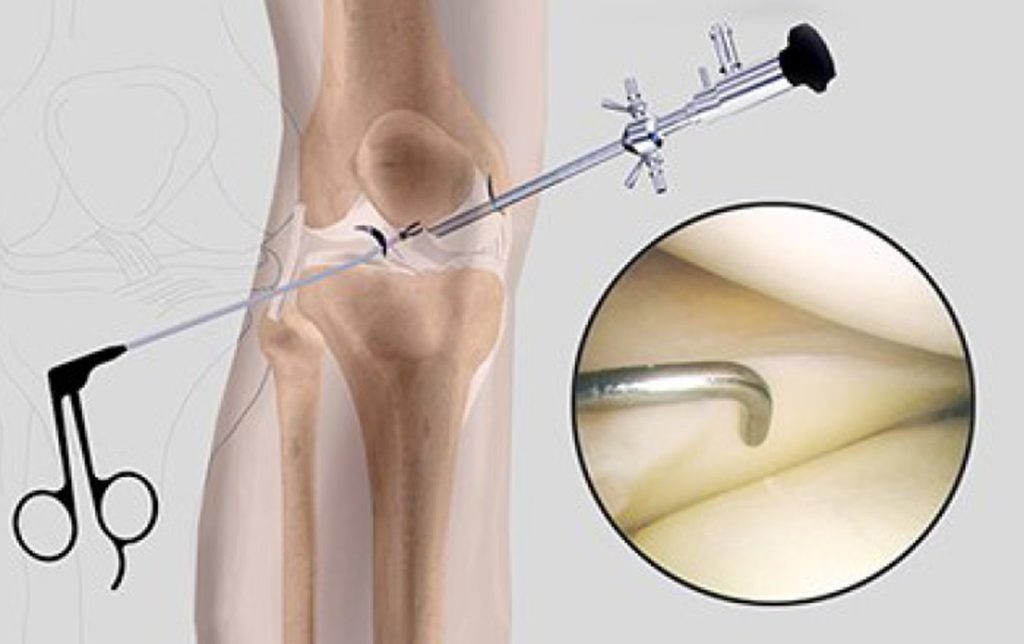Introduction: Knee arthroscopy has emerged as a groundbreaking technique in the field of orthopedic surgery. This minimally invasive procedure allows surgeons to diagnose and treat a wide range of knee conditions, resulting in faster recovery times, reduced postoperative pain, and improved patient outcomes. In this blog post, we will delve into the benefits, procedure, and applications of knee arthroscopy, shedding light on its transformative impact on knee-related orthopedic care.
- Understanding Knee Arthroscopy: Knee arthroscopy is a surgical procedure that utilizes a small camera, called an arthroscope, to visualize and treat knee joint problems. This technique involves making tiny incisions through which the arthroscope and specialized instruments are inserted, enabling the surgeon to examine and address specific issues within the knee joint.
- Advantages of Knee Arthroscopy: a) Minimally Invasive Approach: Compared to traditional open knee surgery, arthroscopy requires smaller incisions, resulting in less tissue damage, reduced scarring, and a lower risk of infection. b) Precise Diagnosis: The arthroscope provides a clear and magnified view of the knee joint, allowing for accurate diagnosis of various conditions. c) Improved Recovery Time: Due to the minimal invasiveness, knee arthroscopy often leads to faster recovery times, enabling patients to resume their normal activities sooner. d) Enhanced Pain Management: The smaller incisions and reduced trauma associated with arthroscopy often result in less postoperative pain and discomfort.
- Conditions Treated with Knee Arthroscopy: a) Meniscal Tears: Arthroscopic techniques allow surgeons to trim or repair torn meniscus, the C-shaped cartilage in the knee that cushions and stabilizes the joint. b) ACL and PCL Injuries: Arthroscopy enables reconstruction or repair of torn anterior cruciate ligament (ACL) and posterior cruciate ligament (PCL), crucial for knee stability. c) Cartilage Damage: Arthroscopy can be used to smooth or remove damaged cartilage, addressing conditions like chondromalacia or articular cartilage defects. d) Synovitis and Loose Bodies: Inflammation of the synovial lining or the presence of loose bodies in the knee joint can be diagnosed and treated through arthroscopy.
- The Knee Arthroscopy Procedure: During knee arthroscopy, the surgeon creates small incisions to insert the arthroscope and specialized instruments. The arthroscope captures high-definition images of the knee joint, allowing the surgeon to visualize and address the specific problem. Depending on the diagnosis, the surgeon may repair, trim, remove, or reconstruct damaged structures within the knee joint.
- Postoperative Care and Recovery: After knee arthroscopy, a tailored rehabilitation program is typically prescribed, including physical therapy exercises to strengthen the knee, improve range of motion, and regain functionality. Recovery time varies depending on the individual’s condition, the extent of the surgery, and adherence to the rehabilitation protocol.
Conclusion: Knee arthroscopy has revolutionized the landscape of knee-related orthopedic surgery. With its numerous benefits, including minimally invasive techniques, accurate diagnosis, improved recovery times, and enhanced pain management, knee arthroscopy continues to shape the future of knee care. As advancements in technology and surgical techniques continue, this procedure holds tremendous promise in further optimizing patient outcomes and improving overall quality of life.
Disclaimer: This blog post is for informational purposes only and should not be considered medical advice. If you have concerns or questions about knee arthroscopy or any orthopedic procedure, consult a qualified healthcare professional.


